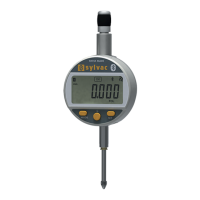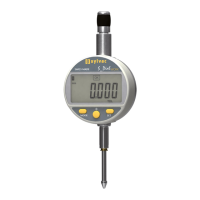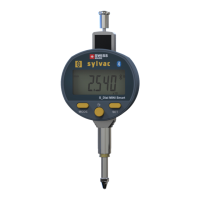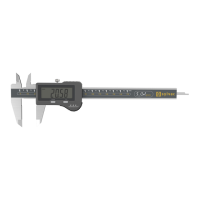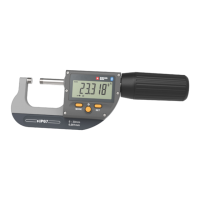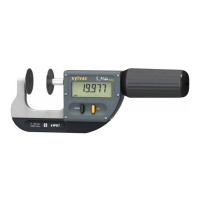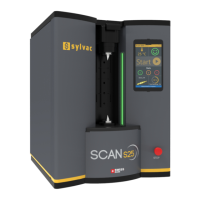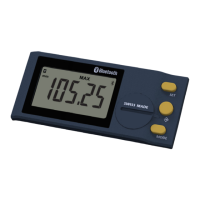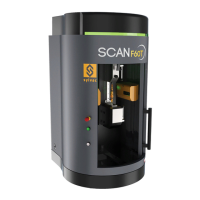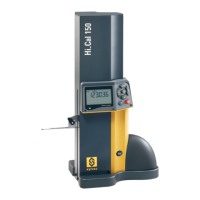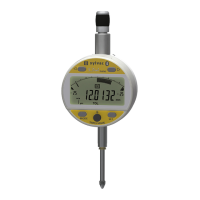
Do you have a question about the Sylvac S Dial WORK ANALOG NANO Smart and is the answer not in the manual?
| Type | Analog Dial Indicator |
|---|---|
| Resolution | 0.001 mm / 0.00005 in |
| Accuracy | 0.003 mm |
| Display | Analog |
| Material | Stainless Steel |
| Protection Class | IP54 |
| Range | 12.5 mm |
| Measurement Range | 12.5 mm |
Specifies the required battery type (Lithium 3V, CR2032) for the instrument.
Details the size and pattern of mounting holes on the rear of the instrument.
Lists and describes the function of control buttons like MODE, SET, and Favourite.
Explains the meaning of various indicators shown on the digital display.
Describes the two-tier access to instrument functions and modes.
Explains the initial steps to start and operate the instrument.
Details zero reset and preset value functions for measurement setup.
Explains MIN/MAX/DELTA and 2-point measurement modes.
Covers tolerance display and Bluetooth module configuration options.
How to change measurement units (mm/Inch) and resolution.
Setting measurement direction and inputting multiplier values.
Configuration options for the automatic power-off feature.
How the digital display stores MIN, MAX, or DELTA values.
Assigning a preset value to the current measurement position.
Step-by-step guide to inputting tolerance limits via TOL mode.
Using specific buttons for nominal value and tolerance interval entry.
Notes on indicator lights and crossing tolerance intervals.
Adjusting values using dedicated buttons and their speed control.
Method for entering numeric values digit by digit.
Realignment of tolerance limits on the analog scale.
Available Bluetooth profiles (SIMPLE, PAIC, Hid) and their uses.
Steps to activate and establish a Bluetooth connection.
Details on pairing with a master device for connection.
Frequency band, modulation, power, range, and battery life of Bluetooth.
Procedure to assign specific functions to the favourite key.
Setting up data transmission using the favourite key.
Changing measurement units with the favourite key.
Steps to adjust the instrument for dynamic measurement.
How to take measurements in dynamic mode.
How to put the instrument into stand-by mode.
Restoring initial instrument settings via a button press.
Enabling/disabling functions and modifying second-level access.
Connecting to peripherals via Proximity, Power cables, or Bluetooth.
Commands for setting units, functions, and modes.
Commands for checking battery, resetting, and standby.
Details on measurement range, errors, and repeatability.
Information on battery, data output types, and operating conditions.
A section for users to record their own notes.
Explanation regarding the currency of calibration certificate dates.
FCC and IC identification numbers for the device.
Compliance with FCC rules and conditions for operation.
Guidelines for radiofrequency radiation exposure.
Description of the Bluetooth module used in Brazil.
Compliance conditions for wireless modules in Mexico.
Notice for Class A equipment in South Korea.
Certification details for radio equipment in Japan.
Notice for radio frequency devices in Taiwan.
